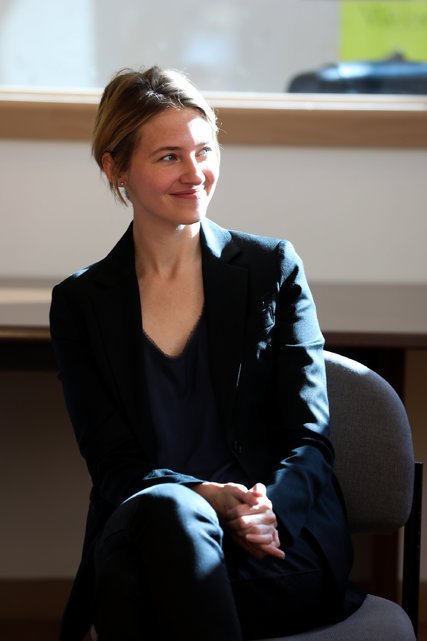In a statement to The New York Times, Mr. Weber said the allegations of the models were “untrue” and that he had “never touched anyone inappropriately.” Lawyers for Mr. Testino objected to the allegations and called the credibility of the men who said they were harassed into question.
Condé Nast began working on the code not long after dozens of women accused the Hollywood producer Harvey Weinstein of sexual misconduct in articles by The Times and The New Yorker, the company said. Along with Ms. Wintour, the initiative was spearheaded by Mr. Sauerberg and Jonathan Newhouse, chief executive of Condé Nast International, which will also adopt the code. (It may be modified to make it relevant for different countries and cultures.)
“A crisis often results in action,” Ms. Wintour said.
Though the fashion industry has been known to overlook sexual harassment in the past, there are indications, like the new Condé Nast policy, that it is beginning to push for systemic change.
Under its new guidelines, the company will no longer work with models who are younger than 18. There will be no alcohol on photo sets. Photographers will not be allowed to use the set for personal work after a commissioned shoot is completed, and it is recommended that models not be left alone with photographers, makeup artists or other contributors. Any nudity or “sexually suggestive poses” in the shoot will be detailed beforehand and agreed to in advance by the subject. There will be an anonymous reporting line for any violations.
After the Weinstein allegations, Hearst Magazines, which owns Harper’s Bazaar, Elle, Esquire, Cosmopolitan and others, added a clause to its contributor agreements requiring independent contractors to reveal any harassment claims, informal or formal, pending against them. They must also notify Hearst if they become aware of any such claims while working for the company.
“We are extremely concerned and anxious about providing a healthy working environment, which we know is sometimes difficult in the fashion world,” said Joanna Coles, chief content officer of Hearst Magazines.
Newsletter Sign Up
Continue reading the main story
Thank you for subscribing.
An error has occurred. Please try again later.
You are already subscribed to this email.
Both actions follow a model charter created and signed in September, even before the Weinstein exposé, by the two biggest luxury fashion groups in the world: LVMH Moët Hennessy Louis Vuitton and Kering. The charter details rules about the employment of models, including those regarding nudity, health, age and recourse.
It comes shortly after IMG Models, home to Gigi Hadid and Karlie Kloss, updated its existing “Model Protection” instructions (chaperones for minors; no nudity or semi-nudity unless agreed in writing in advance; and no using a model’s image “in a pornographic or derogatory manner”) to include a mission statement laying out its approach to harassment. And it coincides with legislative bills being introduced in New York and California this month that address ways to protect models from, and educate the industry about, sexual harassment.
Advertisement
Continue reading the main story
“These are not nuanced statements; they are very clear requirements,” Mr. Sauerberg said of the new guidelines for Condé Nast, which will apply to everyone working on a company shoot.
Antoine Arnault, an LVMH board member and the chief executive of Berluti who was one of the driving forces behind the model charter, has said the group will adopt a zero tolerance stance toward any agency that does not comply with its requirements. But it is unclear what will happen if the Condé Nast guidelines are violated.
As it now has with Mr. Weber and Mr. Testino, Vogue stopped using the photographer Terry Richardson when allegations of his sexual misconduct were made public in 2010. “We need to make sure the punishment fits the crime,” Mr. Sauerberg said. “There’s a difference between firing someone and reprimanding them.”

Making decisions on a case-by-case basis does not contradict the idea that “we are extremely serious about this,” Ms. Wintour said. “We can’t police the world,” she continued, but “there will be consequences” for those who do not accept the end of the blurry line around acceptable behavior.
Sara Ziff, founder of the nonprofit Model Alliance, believes that the industry needs an independent organization to serve as a watchdog, benchmark best practices, run training sessions with certifications, and provide recourse to individuals who might be reluctant to report misbehavior to the entities that directly influence their future.
She has developed a Proposal for Sexual Respect in the Fashion, Entertainment, and Media Industries that would involve all stakeholders but be beholden to none. She has been gradually introducing the idea to organizations in the industry, and is hoping for a group buy-in.
“It is clear that we all have a problem — the businesses are facing serious reputational risk, and the models and other vulnerable members of the industry’s work force have legitimate concerns about their safety and dignity in the workplace,” Ms. Ziff said, noting that meant they had to work together toward a solution.
“What’s key is that it’s an independent, nonprofit entity, so you don’t have the fox guarding the henhouse,” she added.
Continue reading the main story
Article source: https://www.nytimes.com/2018/01/13/fashion/conde-nast-new-code-of-conduct-sexual-harassment-models.html?partner=rss&emc=rss
Speak Your Mind
You must be logged in to post a comment.